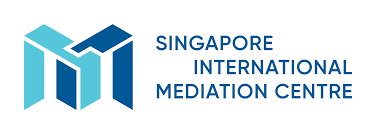Arbitration and Mediation – Two Mutually Exclusive Worlds?
Mediation and arbitration have historically been described by practitioners and academics under the same category of “alternative dispute resolution (ADR)”. However, beyond their similarities as confidential and party-controlled alternatives to public litigation, there are sharp contrasts in the nature of each ADR process. It is not unusual that lawyers and arbitrators find it difficult to adapt to the facilitative and flexible methods of mediators. Similarly, it is also common for mediators and mediation advocates to speak of their frustration with the adversarial and highly-structured arbitration procedure. In a seminar organized by SIArb, Mr George Lim SC and Prof Lawrence Boo joined other panelists in debunking the view that mediation and arbitration were competing processes.
In recent years, mediation has enjoyed increasing popularity in Singapore leading to some concerns that it may negatively impact the take-up of arbitration. Such concerns have largely stemmed from those with a “fixed pie” or distributive bargaining mentality.
Two of Singapore’s most experienced mediator-arbitrators disputed this at a seminar organized by the Singapore Institute of Arbitrators on 11 August 2016. Citing international and local case statistics as well as their own practice experience, they argued that mediation and arbitration were complementary processes. Each process had its own purpose, said the speakers, who also pointed out that user preferences on dispute resolution processes were rapidly evolving and new hybrid processes were already actively used for many of the complex and high value international disputes. Professional dispute resolvers were challenged to adapt their skills as this would allow them to identify exciting synergies in the new processes rather than fear each new development as a threat to the status quo.
Mr George Lim SC, Chairman of the Singapore International Mediation Centre (“SIMC”), observed that statistics from the Singapore International Arbitration Centre and local mediation centres revealed that mediation and arbitration cases in Singapore have both enjoyed healthy increases to reach record levels in recent years. The data clearly suggested that mediation and arbitration were complementary rather competing processes.
Emphasising this, Mr Lim highlighted that arbitration centres in New York, Paris, London, Dubai, Seoul, Tokyo, Sydney, Manila, and Kuala Lumpur, have all introduced mediation services. This global development reflected the survey findings of the 400 participants at the Global Pound Conference held earlier in March 2016. The participants had indicated that the most common characteristic of an effective dispute resolution process were “a combination of adjudicative and non-adjudicative processes”.
Professor Lawrence Boo, a seasoned international arbitrator who is often also engaged as a mediator, highlighted that the synergies between the processes were real and had been contemplated by the International Arbitration Act (“IAA”). Pointing to sections 16 and 17, he said that the IAA offered a framework for the Tribunal to take on the mediator’s role with the consent of the parties and subsequently continuing with the arbitration if the mediation was unsuccessful.
Prof Boo, a SIMC Board member, highlighted that in Singapore, the arbitrator and mediator were by default separate persons. Attributing this to our common law heritage, he noted that mediators in Singapore were trained to be primarily facilitative and to avoid disclosing their own assessment of the merits of each case. If the mediation failed, the case would be transferred to a judge or arbitrator. In contrast, in some jurisdictions such as Japan’s, the tradition was for mediators to be evaluative and parties were completely comfortable with the same individual having the dual role as both arbitrator and mediator for their case.
Sharing his preference for the Singapore model, Mr Lim shared that he found it very difficult to wear both hats on the same case as he would be expected to disregard confidential information that the parties had disclosed during the mediation. Even if he could do it, parties may not be comfortable and it opened the arbitral award to a subsequent challenge. In the rare circumstance that a person was to accept dual appointment, it would be useful to obtain the parties’ written agreement prior to the mediation, for the full disclosure of all confidential information at the start of any subsequent arbitration, and for parties to agree not to use the dual role of the arbitrator-mediator as a ground to challenge the arbitral award.
To achieve a meaningful mediation, Prof Boo said that it was important that all the key decision-makers are present and that parties had sufficient information to appreciate the difficulties and costs of pursuing their case as well as to crystalise sustainable solutions from collaboration that will lead to real benefits for each side. This would give parties present a more constructive mindset at the mediation and help them look beyond monetary measures for settlement. He added that lawyers and arbitrators had an ethical duty to help users appreciate the cost of arbitration in comparison with the quantum in the dispute and provide sound advice on whether it was more prudent for parties to seek mediation.
In a healthy exchange of views with the panel, the audience agreed that businesses looking to resolve their disputes required an efficient and effective solution. Many of the ADR institutions had already evolved to offer flexibility and quality. In addition to robust process designed to support mediations involving parties from multiple different jurisdictions, SIMC had put together a “Technical Expert Panel”. Parties can ensure that the mediator is supported by specialists with a deep appreciation of the technical realities in the background of the dispute as well as in any solution generated during the mediation. These experts represent more than 30 commercial sectors including oil and gas, aviation, shipping, mega-infrastructure, insurance, accounting, and project finance.
The Singapore government had invested significant resources to position Singapore as the dispute resolution hub of Asia. The role of mediation, arbitration, hybrid and tiered processes was set to grow. Stakeholders will need to examine how they can innovate and recreate their own service offerings to welcome the inevitable disruptive changes in Singapore’s ADR landscape.

